Long before the MX-5 became the world’s best-selling sports car, Mazda had a claim to building the most prolific car in this sector with the original RX-7. Made between 1978 and 1985, this sleek coupé notched up 570,500 sales, putting the MGB’s 523,836 total in the shade. What made this all the more remarkable is the RX-7 was put together from an assembly of seemingly unprepossessing components.
By the mid-1970s, buyers were falling out of love with Mazda’s thirsty rotary engine-powered cars as escalating fuel prices and pollution were increasingly in the limelight. However, Mazda’s designers and engineers refused to throw away this light, compact engine, so instead they refined it.

Chief among the changes were engineering better apex seals – the seals at the tips of each rotor which act not unlike the piston rings in a reciprocating engine – and improved lubrication. What they came up with was the 12A rotary engine, which was light, free-revving, and didn’t take up much space. In other words, the ideal engine for a sports car, which is where the RX-7 came into the equation.
Led by Mazda’s Head of Research and Development at the time, Kenichi Yamamoto, the rotary engine was mounted well back in the chassis, so it sat behind the front wheel line. This helped achieve 50:50 weight distribution, so the project was off to a great start. To this, Mazda added simple but effective MacPherson strut front suspension and a live rear axle located by a Watts linkage. UK cars came with all-round disc brakes and a five-speed manual gearbox as standard, while some other markets made do with drum rear brakes and four ratios in the transmission.
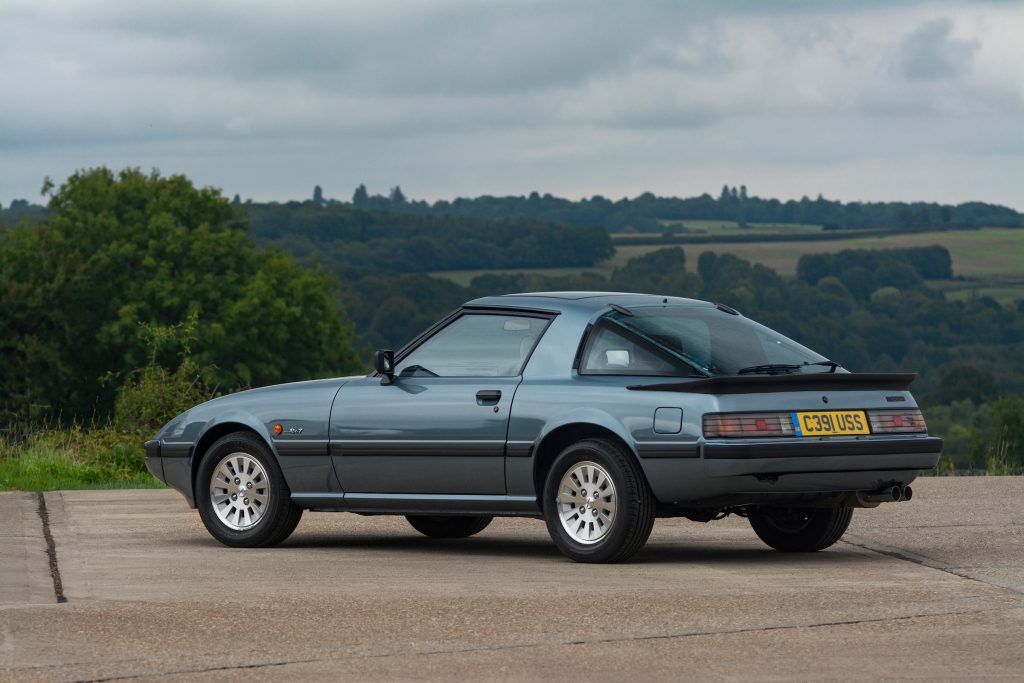
Clothed in a simple yet stylish two-door coupé body with pop-up headlights, the RX-7 earned plaudits from many magazine road testers. They praised the handling, quality, and the general fit and finish, though many pointed out the 105bhp engine could do with a bit more zip. That was addressed in 1981 when UK-spec cars gained a 115bhp version of the 12A engine, pushing top speed to a claimed 125mph and 0-60mph in 9.5 seconds.
Up against the likes of a Ford Capri 2.0 or Nissan 280ZX, the Mazda was quicker and was a worthy alternative to the Porsche 924. US buyers were treated to a 135bhp model that used the 13B rotary engine, while Japanese and US customers latterly had the option of a 160bhp turbocharged version of the RX-7 before it was replaced by the second-generation FC model in 1985. In the UK, Vic Elford offered a turbo conversion that took the 115bhp engine to 165bhp. These cars are also distinguished by their front and rear wings, and side skirts.
Despite selling more than either of the following two generations of RX-7, the original is now the hardest to find in good condition in the UK. Inevitably, prices – which we’ll come to – are also on the up as more people hanker after the style, driving and enjoyment and interesting engineering that this compact coupé has to offer.
What’s an RX-7 like to drive?
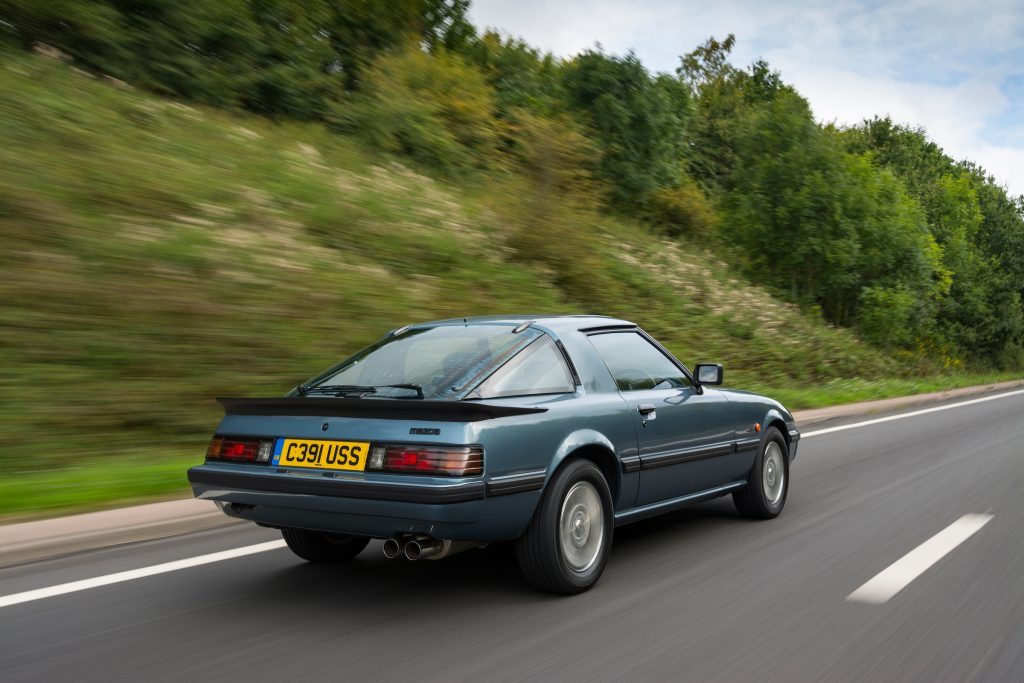
Anyone who has taken a first-gen Mazda MX-5 by the scruff of its neck on a twisty road will have a fair idea of how this original RX-7 behaves. It’s not about power or masses of grip, or even particularly high cornering speeds. Instead, it’s all about balance, and the RX-7 has it in spades.
The rotary engine sits low and far back in the bay, so not only is the weight evenly apportioned front to back, it’s carried low down. It means there’s less body lean in the RX-7 than, say, a Ford Capri, and it has a similar amount of grip to a Porsche 924 or Lotus Eclat. Drive harder and the Mazda rises to the challenge every time, with only an occasional wiggle from the rear-wheel drive set-up to let you know it’s time to ease up.
Mazda went for a simple suspension design in the RX-7, but it’s well set-up and gives this the coupé a reasonable ride for its type and period. There’s enough suppleness for longer drives and a well sorted RX-7 won’t shimmy or rattle on badly pitted road surfaces. Where the RX-7 does feel a step behind the competition is its steering feel, with a recirculating ball system that doesn’t quite offer the fine feedback of the rack-and-pinion in a Porsche 924.
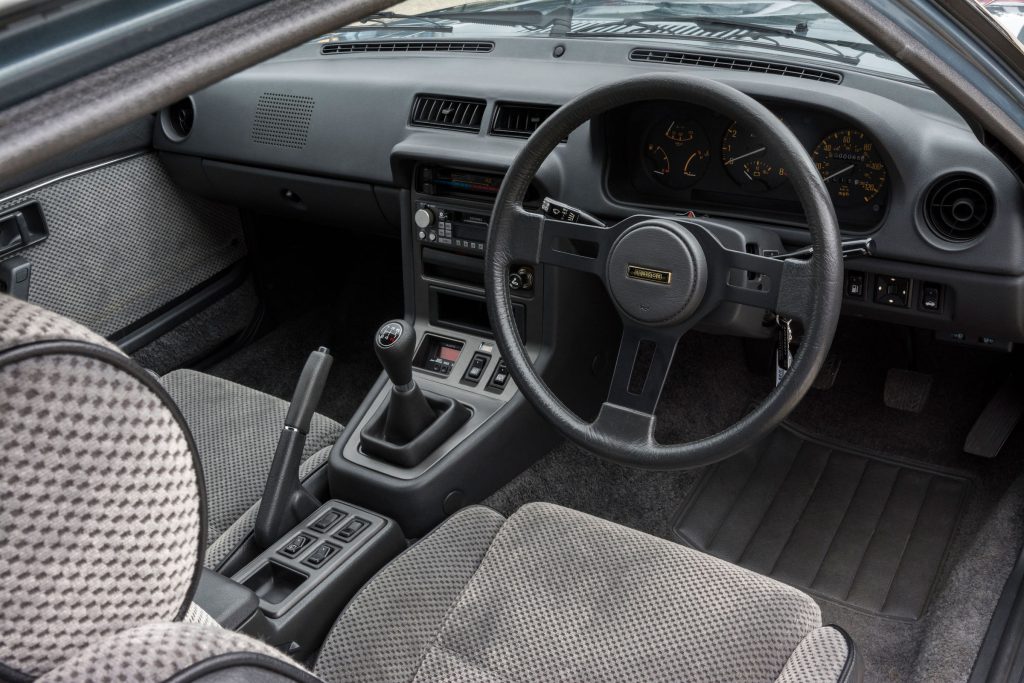
You won’t worry too much about the steering feel, however, as it’s still direct and well weighted, whether in town or on back roads. Plus, the gear shift is quick and well defined – a Mazda staple – so only a car with worn linkages will offer a slack action.
And you will use the gears quite a lot, as the rotary engine needs to be worked to its 7000rpm red line to get the best from it. With little in the way of torque, the RX-7’s engine compensates with revs, and it sounds great when you do. Not everyone will love the unusual noise, which has a hint of jet airliner to it (the flying machines, rather than the Steve Miller Band song), but it’s incredibly smooth – particularly by the standards of its era. And unlike the two-stroke engines to which you can compare a rotary’s behaviour, the RX-7 can also cruise all day without fear of damaging the engine.
Cabin comfort is another plus for the RX-7 and it feels a bit more special than its contemporaries. You sit low to the ground but with decent vision all-round, aided by the large glass rear hatch. Controls are well organised and not dissimilar to the MX-5 that followed in 1989, with clear main dials and a centre console with stereo and heating adjustment. However, where a Ford Capri can accommodate a couple of people in the back seats, the Mazda’s are small and uncomfortable – for occasional use at a push.
How much does an RX-7 cost?
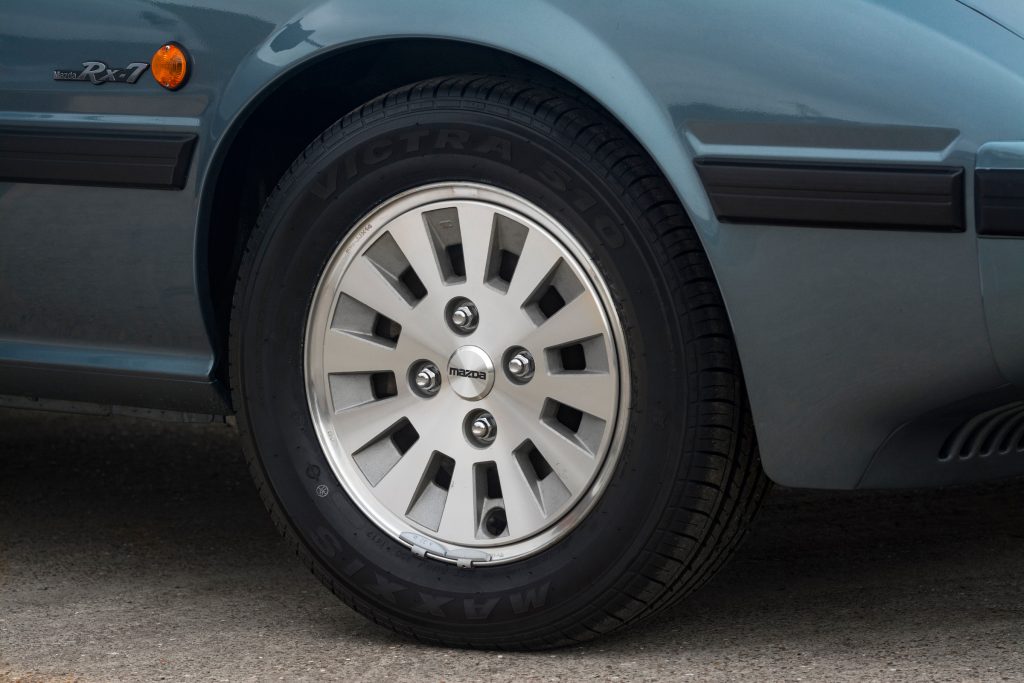
Values of the first-generation Mazda RX-7 had been lagging behind those of the Ford Capri for a long time, but not now. A UK right-hand drive car in running order that needs tidying and mechanical work to make it something you’d be happy to park at a show will cost from around £7000. For a smarter example that you could use without worrying about any imminent repair or restoration work, reckon on spending between £9000 and £12,000.
Up your budget to £15,000 and you can have a very clean, smart RX-7 that will keep you entertained on every drive. There will still be some room for improvement with cars at this price point, while those costing £22,000 are at the top end of the RX-7 spectrum at present. You’ll also find spick and span turbocharged models at this level that have been imported from Japan.
What goes wrong and what should you look for?
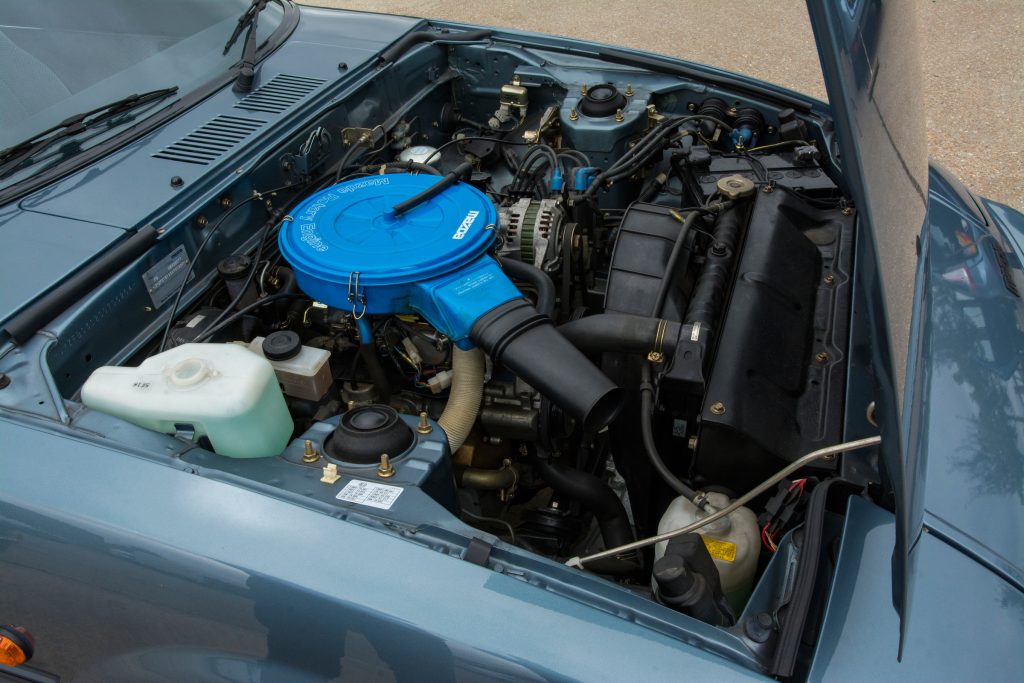
Much of the appeal of the Mazda RX-7 lies in its otherworldly rotary engine, which revs so keenly and with a unique sound. Doom-mongers will tell you to start with the engine’s rotor tip seals, but you should start with a visual inspection of all the coolant hoses. Any leaks here can be solved with new pipes, which are not expensive to replace and can prevent much pricier problems in the future. Also look for any white smoke from the exhaust after start-up that points to worn oil control rings letting coolant in where it shouldn’t be. Also look for oil leaks from the relevant pipework and oil cooler connections as the oil helps keep the engine at the correct temperature.
If all of that looks okay and the engine fires up promptly with little or no smoke as soon as it’s running, you should have a healthy motor. However, it’s still worth spending the money on a professional compression check, which should see the motor register at least 75psi. Anything less than that points to an imminent engine rebuild.
Front and rear crankshaft seals can leak oil and also require an engine strip, which is when you can check the rotor tip seals. These seals are cheap to replace but the labour to strip the engine makes it an expensive job, so you might as well do all of the jobs to make the engine as good as new if going to this extent. This will come to around £3500 at a specialist. Whether you need an engine rebuild or not, you should change the engine’s oil every 3000 miles or annually depending on which comes around first. You also need to keep a close eye on the oil level and use a good quality 20W/50 semi synthetic oil.
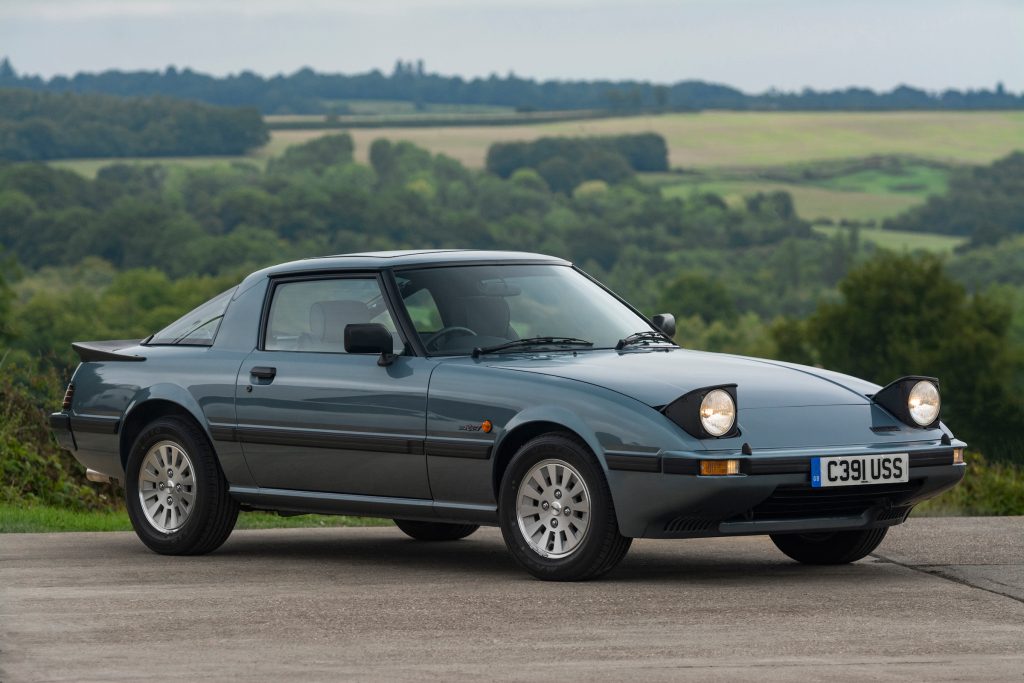
The rest of the RX-7’s transmission and running gear is strong and easy to work on for the home mechanic. Gearboxes don’t wear out easily and a clutch can easily last up to 100,000 miles. Steering and suspension will benefit from a refresh with new bushes and rubbers, while improved polybush kits can tighten up the handling for little extra expense.
With the bodywork, all of the usual rot spots for cars from the 1970s and ’80s need to be given a good prod. This means wheelarches, inner wings, sills, floorpans, door bottoms, windscreen surround, boot floor, and suspension mounts. Replacement panels are very thin on the ground, so you’ll either need to be handy with forming metal shapes or pay or be prepared to pay a professional restorer, but the good news is the RX-7 is no more complicated to put right than a contemporary Ford Capri or Porsche 924.
It’s the same story for the interior of the RX-7. New parts are like dental implants for hens, so a car with a good interior but worn engine will ultimately be easier to restore. There are a handful of specialists in the UK with stocks of parts, but you might also have to look to the US, where most first-generation RX-7s were sold (and Australia as a good source of right-hand drive specific parts).
Which is the right RX-7 for you?
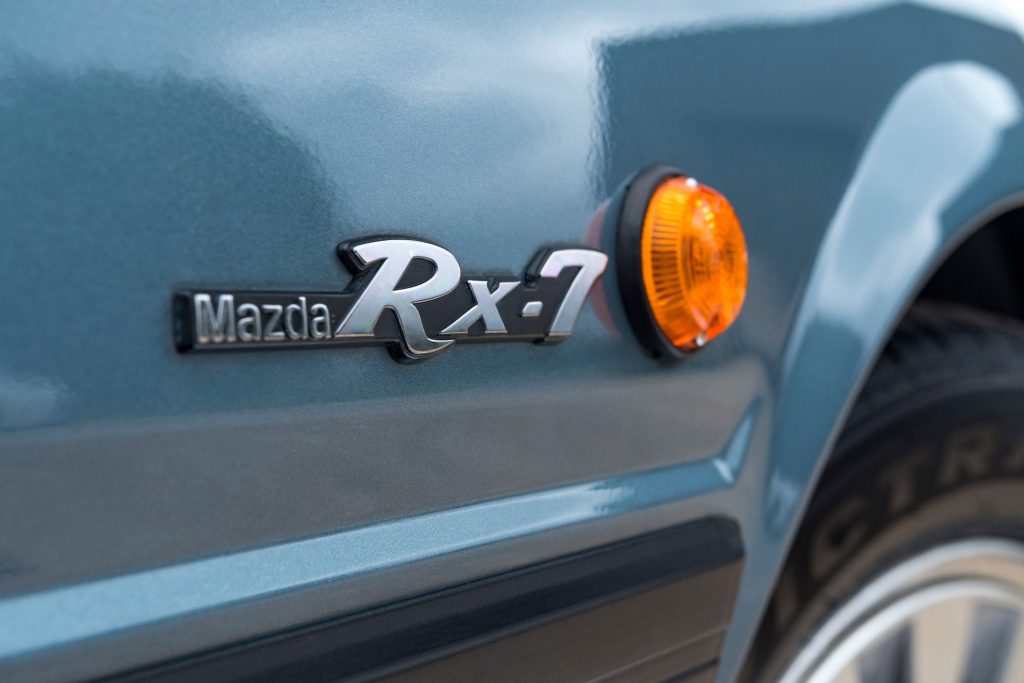
The only major choice for UK buyers is whether you want the earlier car with 105bhp engine or the more powerful version with 115bhp from 1981 onwards. For the best driving experience, the later car is the one to have. However, you’re more likely to buy on condition whether you want a show car, one to use and enjoy, or a car to restore.
If you come across an Elford-converted turbocharged car, you would be wise to snap it up if you have the chance as there are reckoned to be only about 20 left of the 500 or so that were converted in period.
Check out the Hagerty Media homepage for daily news, features, interviews and buying guides, or better still, bookmark it.









Good luck finding an original UK supplied car they’ve all rusted away. All UK cars of all manufacturers of cars from the 70 to the 90s suffered with Tin worm.
My brother’s is up for sale and is in very good condition.
https://www.classiccarsforsale.co.uk/mazda/rx-7/393321
I have 2 Elford RX7’s one turbo and one nonturbo but has a full Elford body kit and wheels. Unfortunatly both are 40 years old and suffering from the dreaded rust now and are off the road getting covered in dust, but the cost of restoration!!!